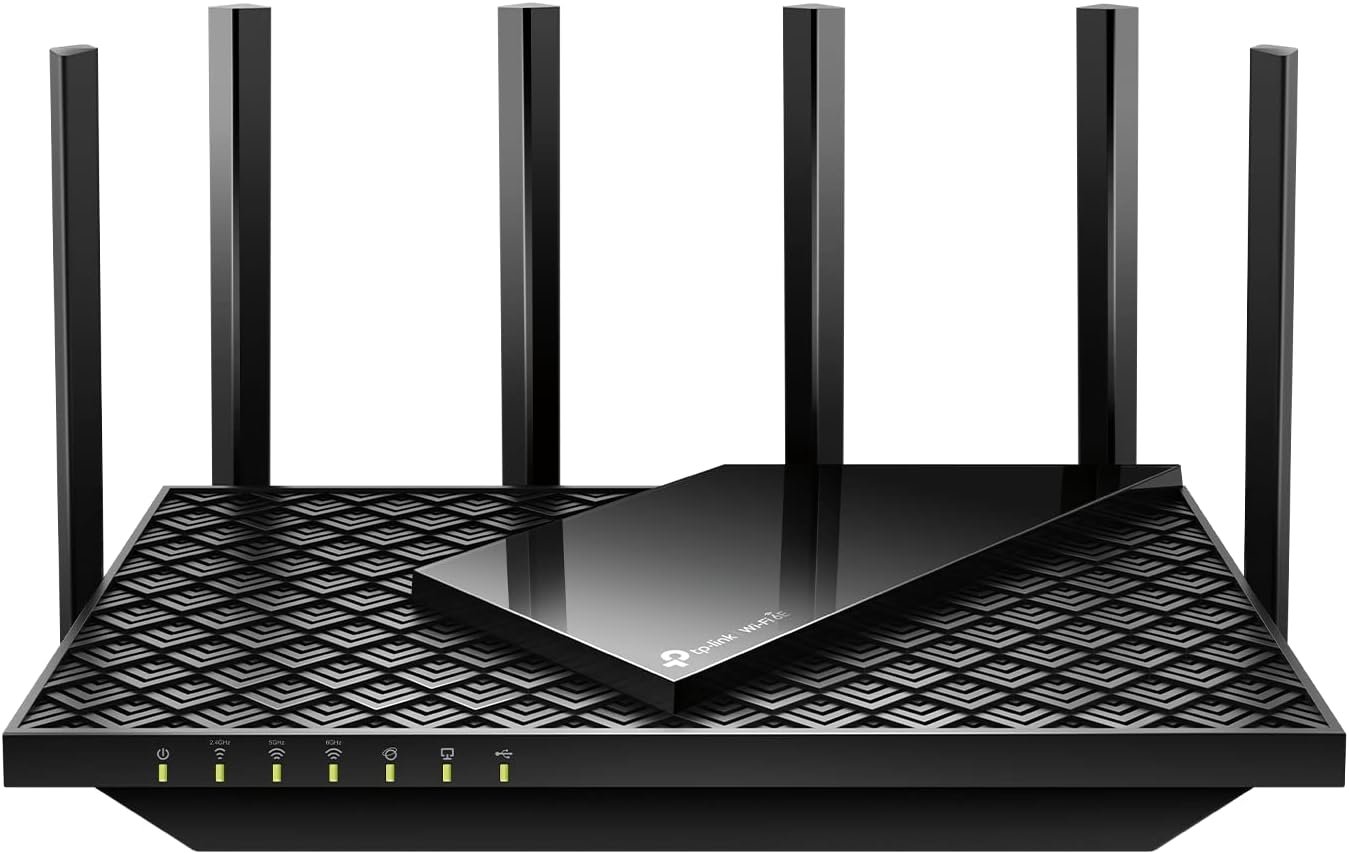Did you know that AI can reduce network downtime by up to 90%? This staggering statistic highlights the transformative power of integrating machine learning into network management. Businesses today face increasing demands for faster, more reliable, and secure operations. Traditional methods often fall short, but intelligent solutions are changing the game.
By combining machine learning with automated management, these technologies minimize manual tasks and streamline processes. Real-time decision-making and predictive analytics allow for proactive issue resolution, ensuring smoother operations. This shift from manual configurations to dynamic, data-driven management is revolutionizing how networks function.
For businesses, this means faster resolution times, reduced operational costs, and enhanced security. The need for efficient network performance has never been greater, and these advancements are meeting that demand head-on. Let’s explore how these innovations are shaping the future of network management.
Key Takeaways
- AI reduces network downtime by up to 90% through predictive maintenance.
- Machine learning minimizes manual tasks, boosting operational efficiency.
- Real-time decision-making ensures proactive issue resolution.
- Dynamic, data-driven management replaces traditional manual configurations.
- Businesses benefit from faster resolutions, lower costs, and enhanced security.
Understanding the Role of AI in Modern Networking
The way we manage networks today is undergoing a massive transformation. Traditional methods, which relied heavily on manual configurations, are being replaced by dynamic, data-driven systems. These advancements are not just incremental; they are reshaping the entire landscape of network operations.
Defining Intelligent Systems in the Networking Context
Intelligent systems refer to technologies that leverage data and analytics to optimize network operations. These systems can process vast amounts of information in real-time, enabling faster decision-making and more efficient management. By automating repetitive tasks, they free up resources for more strategic initiatives.
One of the key benefits is the ability to predict and resolve issues before they impact network performance. This proactive approach minimizes downtime and ensures smoother operations. Additionally, these systems can adapt to changing traffic patterns, ensuring optimal bandwidth allocation.
The Shift from Traditional to Intelligent Networks
Traditional networks often relied on static configurations that required constant manual adjustments. This approach was time-consuming and prone to errors. In contrast, intelligent networks use real-time data to make dynamic adjustments, ensuring better network performance and reliability.
For example, these systems can automatically reconfigure device settings based on current needs. This capability not only improves efficiency but also enhances security by identifying and mitigating potential threats before they escalate.
| Aspect | Traditional Networks | Intelligent Networks |
|---|---|---|
| Configuration | Manual, static | Dynamic, data-driven |
| Issue Resolution | Reactive | Proactive |
| Traffic Management | Fixed bandwidth | Adaptive allocation |
| Security | Periodic checks | Continuous monitoring |
By embracing these advancements, businesses can ensure their networks are not only efficient but also resilient in the face of evolving challenges. The future of network management is here, and it’s smarter than ever.
The Evolution of AI-Driven Networking Technologies
The journey of network management has evolved dramatically over the decades. From manual configurations to intelligent systems, the way we handle networks has transformed. This evolution has been driven by the need for faster, more reliable, and secure operations.
Historical Milestones in Network Automation
In the early days, networks relied on manual setups. Administrators had to configure each device individually, which was time-consuming and prone to errors. The introduction of automation tools marked a significant shift. These tools reduced manual tasks and improved efficiency.
By the 2000s, the focus shifted to dynamic configurations. Systems began using data to make real-time adjustments. This change allowed networks to adapt to varying traffic patterns and user demands. The rise of cloud computing further accelerated this evolution, enabling seamless integrations and scalability.
Emergence of Machine Learning and Analytics in Networks
Machine learning has played a pivotal role in modern networking. By analyzing vast amounts of data, these systems can predict issues before they occur. This proactive approach minimizes downtime and ensures smoother operations.
For example, closed-loop automation uses learning algorithms to make continuous improvements. Digital twins, virtual replicas of physical networks, allow for testing and optimization without disrupting live systems. These advancements have led to substantial performance improvements across industries.
User expectations have also driven this evolution. Today, networks must deliver seamless experiences, whether in enterprise or cloud environments. By leveraging data and analytics, businesses can meet these demands while enhancing security and efficiency.
Core Technologies Behind AI-Powered Network Automation
The backbone of modern network management lies in advanced technologies. These tools are designed to streamline operations, enhance efficiency, and reduce costs. By leveraging datum-driven insights, organizations can optimize their systems for better performance and reliability.
Machine Learning Algorithms and Data Analytics
Machine learning algorithms analyze vast amounts of datum to identify patterns and predict potential issues. This proactive approach minimizes downtime and ensures smoother operations. For example, predictive models trained on historical data can schedule maintenance before problems arise.
Data analytics tools provide deeper insights into network behavior. They help organizations allocate resources more effectively, reducing cost and improving overall performance. These technologies are essential for managing complex systems in real-time.
Natural Language Processing and Computer Vision
Natural language processing (NLP) enables systems to understand and respond to human commands. This capability simplifies network configuration and troubleshooting. For instance, engineers can use voice commands to adjust settings or resolve issues quickly.
Computer vision enhances threat detection by analyzing visual data. It identifies anomalies in network traffic, helping organizations address security challenges proactively. Together, NLP and computer vision contribute to smarter, more efficient network management.
Integrating these advanced technologies with legacy systems can be a challenge. However, the benefits of improved performance and reduced operational cost make it a worthwhile investment for any organization.
Benefits of Integrating AI into Network Management
Integrating advanced technologies into network management brings transformative benefits. These innovations streamline processes, reduce costs, and enhance security. By leveraging data-driven insights, organizations can optimize their systems for better performance and reliability.

Enhanced Efficiency and Reduced Operational Costs
One of the most significant advantages is the drastic improvement in efficiency. Manual tasks are minimized, allowing teams to focus on strategic initiatives. This shift not only speeds up operations but also reduces errors.
Cost savings are another major benefit. Predictive maintenance, for example, can identify potential issues before they escalate. This proactive approach minimizes downtime and avoids costly repairs. Additionally, dynamic resource allocation ensures optimal use of bandwidth, further reducing expenses.
Proactive Security Measures and Real-Time Monitoring
Security is a top priority in modern network management. Advanced systems continuously monitor traffic patterns to detect anomalies. This real-time monitoring allows for immediate responses to potential threats, ensuring a secure environment.
Proactive measures, such as threat detection and automated responses, enhance overall security. These systems learn from past incidents, continuously improving their ability to safeguard networks. This approach not only protects data but also builds trust with users.
| Aspect | Traditional Approach | Modern Approach |
|---|---|---|
| Efficiency | Manual, time-consuming | Automated, streamlined |
| Cost | High operational expenses | Reduced costs through predictive maintenance |
| Security | Reactive measures | Proactive, real-time monitoring |
| User Experience | Inconsistent performance | Reliable, high-quality connectivity |
By adopting these advanced technologies, organizations can ensure their networks are efficient, secure, and cost-effective. The enhanced user experience further solidifies the value of these innovations, making them essential for modern network management.
AI in Networking: AI-Driven Networking, Network Automation with AI, Predictive
Modern networks are evolving to become smarter and more efficient, thanks to advanced technologies. These innovations enable proactive issue resolution and streamline operations, ensuring better performance and reliability. By leveraging data-driven insights, organizations can transform their network management strategies.
Leveraging Predictive Analytics for Proactive Issue Resolution
Predictive analytics plays a crucial role in identifying potential network issues before they escalate. By analyzing historical data, these systems can forecast problems and recommend solutions. This proactive approach minimizes downtime and ensures smoother operations.
For example, predictive models can detect anomalies in traffic patterns or device performance. These insights allow teams to address issues before they impact service quality. Real-time monitoring further enhances this capability, enabling immediate responses to emerging challenges.
Transforming Network Operations with Closed-Loop Automation
Closed-loop automation takes predictive insights a step further by automatically enacting solutions. This process reduces the need for manual intervention, saving time and resources. Systems continuously learn from data, improving their ability to optimize performance.
Consider a scenario where bandwidth allocation is dynamically adjusted based on predicted traffic spikes. This ensures optimal service levels during peak usage times. Such automation not only enhances efficiency but also supports strategic planning.
By integrating these technologies, organizations can achieve a shift from reactive to proactive network management. The result is a more resilient and cost-effective infrastructure that meets modern demands.
Enhancing Network Security Through Artificial Intelligence
In today’s digital landscape, safeguarding networks has become more critical than ever. With increasing complexity and evolving threats, traditional methods often fall short. Advanced technology is stepping in to provide robust solutions that ensure your systems remain secure and resilient.
Behavior-Based Threat Detection and Automated Responses
One of the most effective ways to enhance security is through behavior-based threat detection. This approach analyzes patterns in network activity to identify anomalies. For example, sudden spikes in data traffic or unusual login attempts can signal potential risks.
Automated responses take this a step further by isolating compromised devices within seconds. This reduces the risk exposure and prevents the spread of threats. Unlike manual interventions, which can take hours, automated systems act instantly, ensuring your network remains protected.
Zero Trust Security and Continuous Learning Models
Zero trust security is a modern approach that assumes no user or device is inherently trustworthy. Every access request is verified, regardless of its origin. This model minimizes the risk of unauthorized access and data breaches.
Continuous learning mechanisms further enhance this approach. These systems adapt to new threats by analyzing data in real-time. As complexity increases, they evolve to stay ahead of potential risks, ensuring your network remains secure in dynamic environments.
By integrating these advanced technology solutions, you can achieve a proactive approach to network security. The result is a more resilient infrastructure that protects sensitive data and ensures uninterrupted operations.
Predictive Network Automation: Concepts and Execution
Predictive network automation is reshaping how organizations maintain seamless operations. By leveraging real-time data and advanced analytics, this approach ensures uninterrupted service by addressing issues before they escalate. It’s a game-changer for businesses aiming to optimize their resource allocation and minimize disruptions.
Real-Time Data Collection and Analytics
At the core of predictive automation is real-time data collection. Systems continuously gather information from various points in the network, analyzing patterns to identify potential problems. This solution allows for accurate predictions, enabling teams to act proactively rather than reactively.
For example, if a machine shows signs of unusual activity, the system can flag it immediately. This early detection prevents minor issues from turning into major outages. The integration of analytics ensures that every decision is data-driven, enhancing overall reliability.
Deploying Smart Agents for Automated Troubleshooting
Smart agents play a crucial role in predictive automation. These intelligent tools are deployed throughout the network to monitor performance and trigger automated responses. They act as the first line of defense, resolving issues without human intervention.
Consider a scenario where traffic spikes unexpectedly. Smart agents can reroute data to ensure optimal resource usage. This behavior not only maintains performance but also reduces the workload on IT teams. By automating routine tasks, organizations can focus on strategic initiatives.
This approach transforms traditional network management into a proactive, efficient solution. The result is a more resilient infrastructure that meets modern demands while reducing operational costs.
Navigating Challenges in Implementing AI-Based Networks
Implementing advanced solutions in network systems often comes with its own set of challenges. While the benefits are clear, organizations must address technical complexities, integration hurdles, and concerns around data privacy and ROI. Let’s explore these issues and how to overcome them.
Technical Complexity and Integration with Legacy Systems
One of the biggest hurdles is the technical complexity of integrating new solutions with existing infrastructures. Legacy systems often lack the flexibility to support modern tools, creating compatibility issues. This can slow down deployment and increase costs.
For example, outdated hardware may not support real-time data processing, limiting the effectiveness of advanced analytics. Organizations must invest in modular approaches to ensure smoother integration. This allows for incremental upgrades without disrupting ongoing operations.

Addressing Data Privacy, Skill Gaps, and ROI Concerns
Data privacy is another critical issue. Advanced systems rely on vast amounts of data, raising concerns about compliance and security. Organizations must implement robust encryption and access controls to protect sensitive information.
Skill gaps also pose a challenge. Many teams lack the expertise needed to manage these systems effectively. Training programs and continuous learning environments can bridge this gap, enhancing workforce readiness.
Demonstrating ROI can be difficult, especially in the early stages. However, automated task management and insight-driven decision-making can deliver measurable improvements. For instance, reducing manual troubleshooting time by 70% can significantly lower operational costs.
| Challenge | Solution |
|---|---|
| Technical Complexity | Modular integration, incremental upgrades |
| Data Privacy | Encryption, access controls |
| Skill Gaps | Training programs, continuous learning |
| ROI Concerns | Automated task management, measurable improvements |
By addressing these challenges, organizations can unlock the full potential of advanced network solutions. Continuous improvement and monitoring are key to ensuring long-term success.
Real-World Applications and Use Cases in AI Networking
From healthcare to retail, advanced technologies are transforming how industries manage their digital operations. These innovations are not just theoretical; they are delivering measurable benefits across diverse sectors. By enhancing infrastructure and streamlining processes, organizations are achieving greater efficiency and reliability.
Enhancing User Experience in Enterprise and Cloud Environments
In enterprise and cloud environments, advanced systems are revolutionizing user experiences. For example, Cisco’s solutions have significantly reduced downtime, ensuring seamless operations. These tools optimize resource allocation and enhance security, making them indispensable for modern businesses.
Ericsson’s automated systems have also improved reliability, particularly in 5G networks. By predicting congestion and adjusting parameters in real-time, these technologies maintain optimal performance. This proactive approach ensures users enjoy consistent, high-quality connectivity.
Success Stories from Healthcare, Retail, and Education
In healthcare, advanced systems are improving patient outcomes. For instance, predictive models analyze patient data to detect diseases early. This capability has reduced misdiagnoses and enabled timely interventions, particularly for conditions like diabetes and cardiovascular illnesses.
Retailers are leveraging these technologies to enhance customer experiences. Automated systems manage inventory and optimize supply chains, ensuring products are always available. This efficiency not only boosts sales but also improves customer satisfaction.
Educational institutions are also benefiting. Advanced tools support remote learning by ensuring reliable connectivity. For example, Arista’s CloudVision platform provides seamless network management across cloud and on-premises environments. This flexibility is crucial for delivering uninterrupted educational services.
These real-world examples demonstrate the transformative power of advanced technologies. By addressing specific industry challenges, they deliver long-term value and practical solutions.
Conclusion
The integration of advanced systems into network management has revolutionized operational efficiency. By leveraging real-time data and pattern recognition, these technologies minimize downtime and enhance security. This shift from reactive to proactive approaches ensures smoother operations and cost savings.
Effective analysis of network behavior allows for dynamic adjustments, improving resource allocation and user experience. Organizations can achieve up to 40% better performance and 30% cost reductions. These advancements are essential for scaling operations in today’s fast-evolving landscape.
To stay ahead, consider adopting these solutions for future-proof, scalable systems. Continuous innovation and adaptation are key to maintaining reliability and meeting modern demands. Explore advanced tools to optimize your network and stay informed on emerging trends.




